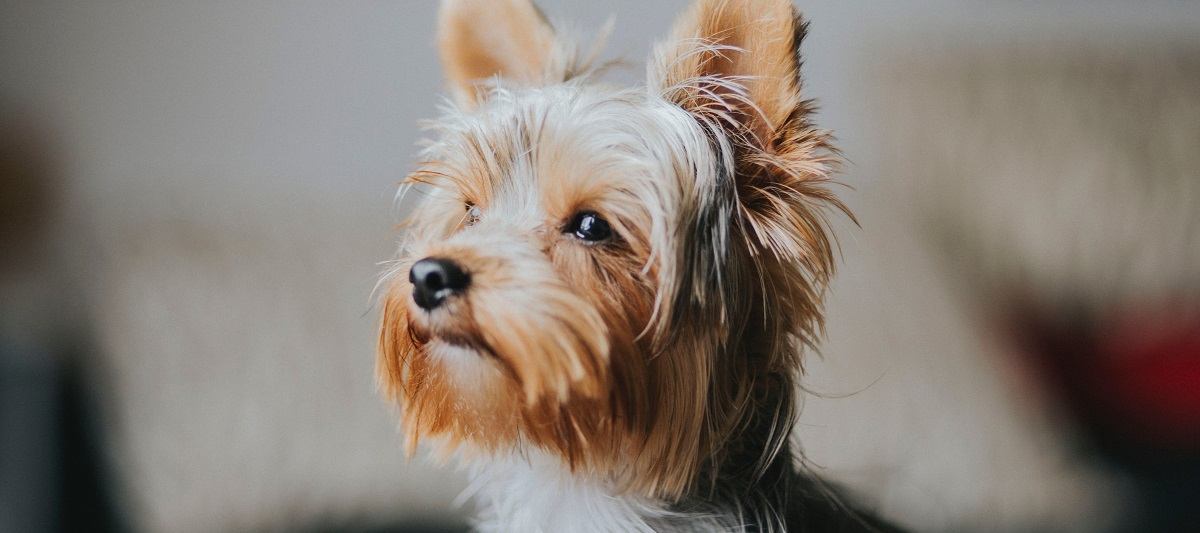For first time pet owners or homeowners, there can be a learning curve for the best ways to keep your home clean from pet hair. A common misconception is that pet allergies are a result of pet hair, but fur is actually NOT an allergen. Pet hair or fur can collect dander, saliva, and urine, as well as carry allergens such as dust and pollen. If you’ve decided it’s time to step up the cleaning regime, here are some tips for choosing the best air filter for pet hair.


MERV 11 vs MERV 13
Let’s look at the basics first. MERV ratings, (Minimum Efficiency Reporting Value), are the primary rating system for air filters, and each category is able to filter out different pollutants depending on their size. MERV 11 filters are the minimum recommendation for pet owners since they’re able to filter out the smaller particles that your pets bring indoors from outside, as well as pet dander. However, MERV 13 air filters have the added benefit of also being able to trap airborne viruses and bacteria.
What is pet dander?
Pet dander is a combination of tiny particles of skin shed by common household pets such as cats, dogs, birds, hamsters, and more. These are the microscopic particles that end up floating in your air and spreading through your home. Air filters capture more pet dander than they do pet hair since often pet hair ends up sticking to the floor or fabric surfaces.
Choosing between a MERV 11 vs MERV 13 air filter
Although you can choose MERV 11 filters to help keep your air clean when you welcome a pet into the family, MERV 13 filters are the better choice if you also have newborns or elderly family members living with you that are more susceptible to sickness. MERV 13 air filters can also capture more allergens and can help minimize the symptoms of pet allergies. If you’re really looking for the best air filter for pet hair and pet dander, but also for a higher level of air cleanliness and quality, choose a MERV 13 air filter. The main difference between MERV 11 and MERV 13 air filters, is that MERV 13 filters are also able to capture viruses and bacteria and are more effective for people with pet allergies.
| MERV 11 | MERV 13 |
|---|---|
| Pollen | Pollen & Outdoor Allergens |
| Dust, Lint, & Dust Mites | Dust & Dust Mites, Indoor Allergens |
| Pet Dander & Pet Hair | Pet Dander & Pet Hair + Allergens |
| Smoke & Smog | Smoke & Smog |
| Viruses & Bacteria |
Other Ways to Limit Pet Hair
Cleanliness is Key
Keeping a clean home will be the biggest preventative measure you can take to minimize pet hair and pet dander. Since pet dander is made of small particles, you may not be able to physically see it, so it’ll be important to clean all surfaces to help get rid of pet dander.
- First, vacuum all rugs and floors but make sure your vacuum has a HEPA filter to trap small particles, like pet dander, as well as the visible pet hairs. If pet hairs get stuck in fabrics, you may need to use a lint roller as well.
- Next, dust all surfaces with a damp microfiber towel so that you’re not spreading around dirt. For furniture and curtains use a sticky lint roller to pick up any skin or protein particles that were shed by your pet.
- Lastly, make an effort to keep your pets off the couch and out of your bedroom. An allergen-free cover can prevent pet dander and pet hair from getting stuck into the fibers of the fabrics, which makes it very difficult to remove.
Upgrade Air Quality
Air quality is often overlooked since you often can’t visually see the difference. However, since you’re dealing with microscopic particles like pet dander, it’s important to have a quality air filter. A MERV 13 filter is best for asthma and allergy sufferers since it filters particles from pet dander, pollen, dust mites, and even airborne viruses. Measure your current air filter and opt for a high MERV rating to proactively protect your air quality and get rid of pet dander and pet hair.
For those looking for extra protection, you may also use an air purifier, also known as an air scrubber, to quickly and efficiently clean your air. Advanced air purifiers may be costly, but they often use multiple layered filters for ultimate air cleanliness.
Pamper Your Pets

According to the American Veterinary Medical Association, nearly 40% of households own a dog, and just over 25% own a cat. These are the two most common pets, and both cause problems for allergy sufferers. Lung.com stated that about twice as many people report allergies to cats when compared to dogs and that non-allergenic dogs or cats do not exist.
The easiest way to get rid of pet dander and excess pet hair, is to pamper your pet with weekly baths using pet-friendly shampoo. Baths will help provide some allergy relief since you’ll be washing away loose skin and hair particles.
You can support your pet’s diet with high-quality foods that contain Omega-3 and Omega-6 fatty acids which are healthy oils that help moisturize skin, so pets shed less. In between baths you can use hypoallergenic pet wipes that help remove any other allergens that may have accumulated on your pet’s fur. If your dog or cat loves the vacuum, you can even vacuum their bodies to help get rid of any loose hair and dander. My puppy personally loves to be vacuumed and gets excited when I bring the vacuum out! Lastly, when you’re cleaning your home, make sure to include your pet’s bed. Give it a good vacuum and a weekly wash to get rid of dander and pet hair build-up.
What Is The Best Air Filter For A Home With Pets?
When evaluating air filters and you have pets, it’s important to consider which filters are compatible with your HVAC system, how often replacements are needed, and their filtration strength. The best air filters for pets have higher MERV ratings to trap harmful microscopic dander and allergens. They also need to provide proper airflow so they don’t damage your HVAC unit. Using the right high- performance air filter for pet dander can also neutralize pet odors and support your family’s well-being.
What MERV Rating Is Best For Filtering Pet Dander?
If you’re trying to ensure you have breathable air in your home, filters with a MERV rating for pet dander ranging between 11 and 13 are the best solution. While lower-rated filters keep fur and larger debris from circulating, they frequently miss fine allergens and particles that trigger asthma and allergy attacks. If someone in your home suffers from respiratory symptoms or you have multiple pets, using a MERV 13-rated air filter will improve your air quality.
Which Air Purifiers Work Best For Pet Hair?
Air purifiers that work best for pet hair are models that include multi-stage filtration with a washable pre-filter, activated carbon, and a HEPA filter. Purifiers that work best in large rooms have powerful fans and broad coverage to purify the air more efficiently. Picking an air purifier for pet hair that includes easy access makes it easier to manage pet hair because the buildup can quickly clog filters.
How Often Should You Replace An Air Filter When You Have Pets?
When you have pets in your home, your air filter works harder and clogs more, so you need to replace it more frequently. Due to pet hair buildup, debris, and odors, it should be replaced every 30 to 60 days and monitored to determine if it needs changing sooner, especially when pets shed more or if you have a high-shedding type of breed. Switching out an air filter for dust and pet hair regularly will keep your indoor air clean and your HVAC system operating more efficiently.
Do Air Purifiers Help With Pet Allergies?
In homes with pets, air purifiers can make a difference for people who suffer from pet allergies. They remove microscopic pet dander and fur that can affect breathing. Air purifiers that use HEP filters are highly effective because they trap the smallest pet hair particles that trigger an allergic reaction. Air purifier filters with activated carbon complement other steps to limit allergens from circulating. Air purifiers for pet hair continuously filter your home’s air and reduce pet odors to create a cleaner environment and a more breathable living space.
Can Air Filters Help With Pet Odors?
When they are made with activated carbon to absorb pet dander, fur, and accidents, air filters reduce pet odors in the home. HEPA filters with built-in deodorizing layers can help eliminate lingering odors while capturing allergens, which is useful in pet zones. The number of pets and the size of the space can affect the air filter’s performance. If your home is large, it may be beneficial to have a higher capacity HVAC system that will circulate the air more often. When filters are replaced as they get dirty, carbon air filters can keep your home smelling fresh and clean without offensive pet odors.
What Is The Difference Between HEPA and MERV Filters For Pet Owners?
Both HEPA and MERV filters help pet owners manage allergens, but they work differently. HEPA filters capture up to 99.92% of tiny particles like dander, hair, and airborne bacteria. They’re ideal if you suffer from allergies. HEPA filters are usually used in air purifiers. MERV filters with ratings of 8 to 13 are effective at providing effective coverage to filter out pet hair from your HVAC system. If your home has multiple pets and you want maximum air filtration, upgrade to a higher-rated air filter that’s compatible with your central HVAC system.
Now that you know the differences between MERV 11 vs MERV 13 air filters, you’ll be able to choose the best air filter for pet hair, based on your personal preferences and situation.
Related Posts:
Learn Which Are the Best Air Filters for Allergies & AsthmaNew COVID Variant "Eris": Symptoms, Impact, and Importance of MERV 13 Filters
Which MERV Rated Air Filter is Best for Pet Dander?

